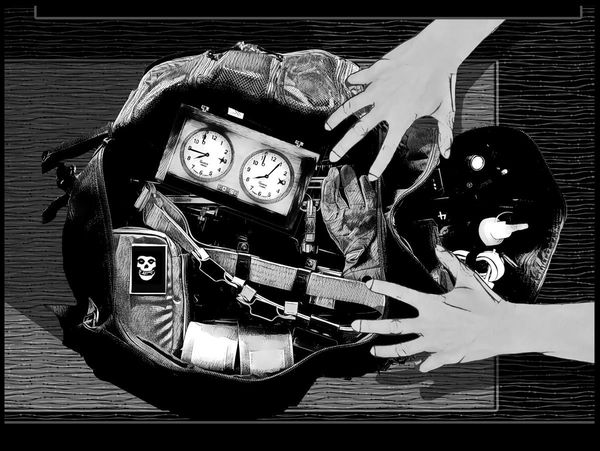Art can be found everywhere. If there is enough humility in you, if you are not afraid to learn, to pay attention to detail, to respect the material you are working with, and if you dare to shape it in your own style, you can make something special out of the most ordinary things. Even if you’re moving from behind a camera to a meat counter. Discover the story of Oxána Sztrehalet, the Henteslány (meaning ‘Butcher Girl’—the Transl.) in this month’s episode of our Behind the Scenes series.
Being a photographer has never been an easy trade—although from the outside it may seem like it’s but a few clicks, anyone who has even engaged in it professionally knows exactly what great difficulties it entails. Oxána Sztrehalet graduated first from the Secondary School of Visual Arts in Budapest, then from the University of Kaposvár, followed by the Moholy-Nagy University of Art and Design. She liked the atmosphere of her alma mater so much that after graduating as a photographer she became a teacher, while also receiving a number of grants and participating in exhibitions.
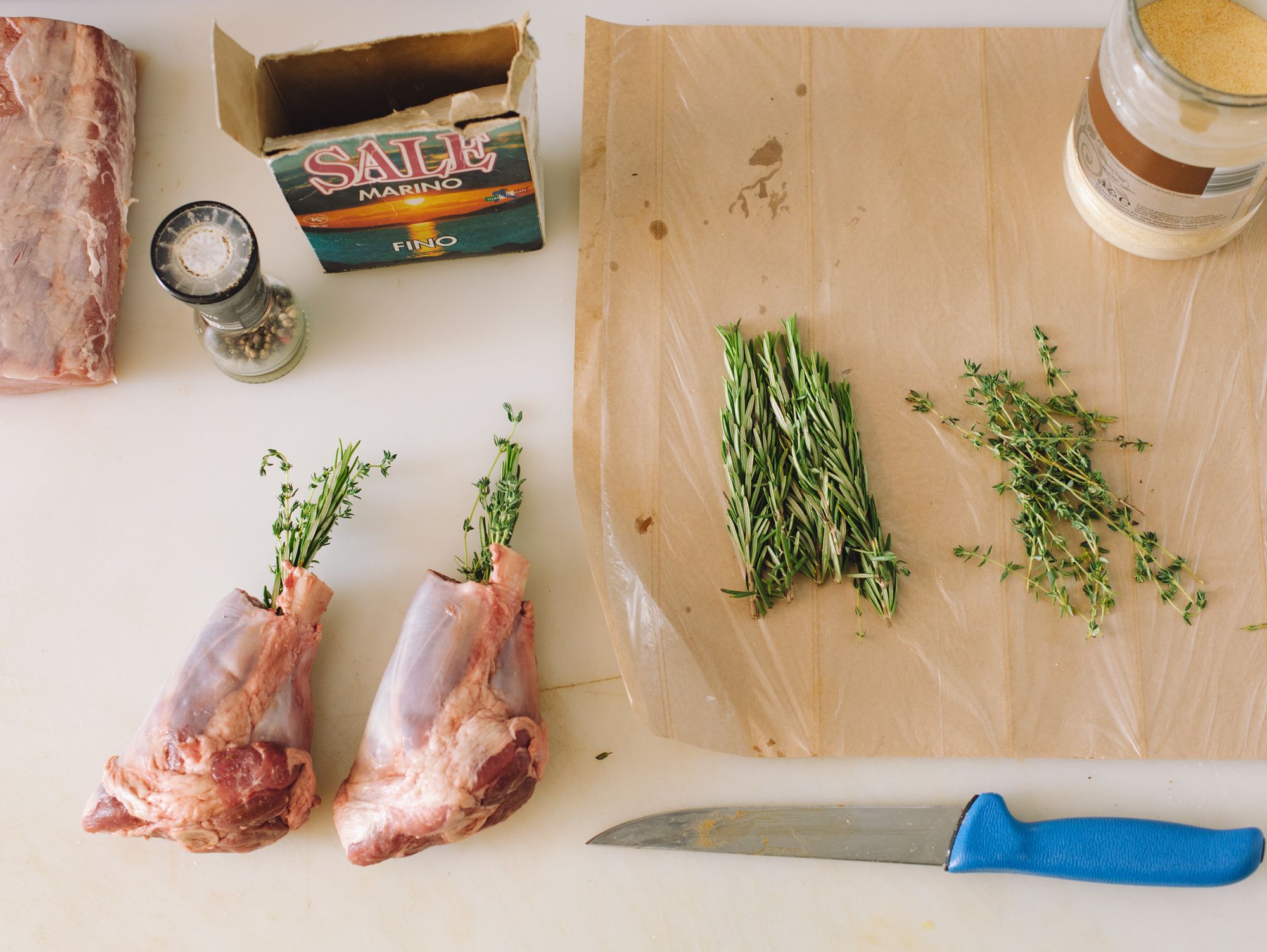
“I loved teaching, but I kept hitting more and more walls. The pandemic, educational reforms—the space around me was shrinking.”
As a commercial photographer, she had also done food photography before and was also gathering experiences as an amateur chef, so it’s fair to say that she had been exposed to the culinary world. However, she hadn’t thought of it as a potential career path until she saw a job advertisement for a salesperson position in a butcher’s shop in Buda.

“I went there as a rookie and said I’d be happy to learn anything. They said I knew how to communicate with customers, so I was hired, but the hard part only came after that.”
After years of maneuvering between the locales of academia and the art world, the change came as a shock, although she had expected a rocky ride. Not only had she entered an incredibly masculine profession as a woman, but she had a university degree and had also worked as an artist, which instead of earning her respect in this environment, yielded skepticism and ostracism. Sometimes people deliberately put her in a difficult position, other times she was called “just a butcher”, but her boss kept telling her not to take offense, there were no hard feelings here. She was advised to grow a thicker skin and carry on. The difficulties didn’t break her, rather she moved forward, helped by some new chef colleagues.

“I learned a lot from them. I started experimenting at home under their influence. I tried everything I could, I cooked and I cooked, to see how everything worked.”
Meanwhile, Covid was happening, and it was clear that the artist’s identity would have to remain in the garage for some time. Her partner at the time offered to help her with some capital to set up a place of her own. As a resident of Budapest’s Újlipótváros neighborhood, she was familiar with the area and knew that apart from another more conventional business, there was a shortage of reliable butcher shops, although the demand and a potential customer base was there, especially since during the epidemic many people had swapped restaurant experiences for home culinary experiments. So in March 2021, when she heard about a soon-to-be-vacant property at the end of Pozsonyi Street, she resigned and opened Henteslány in June. Driven by humility for the profession and a strong will, nothing could stop her, especially since the customers of the storefront’s former tenant—a packaging-free store—also supported her.
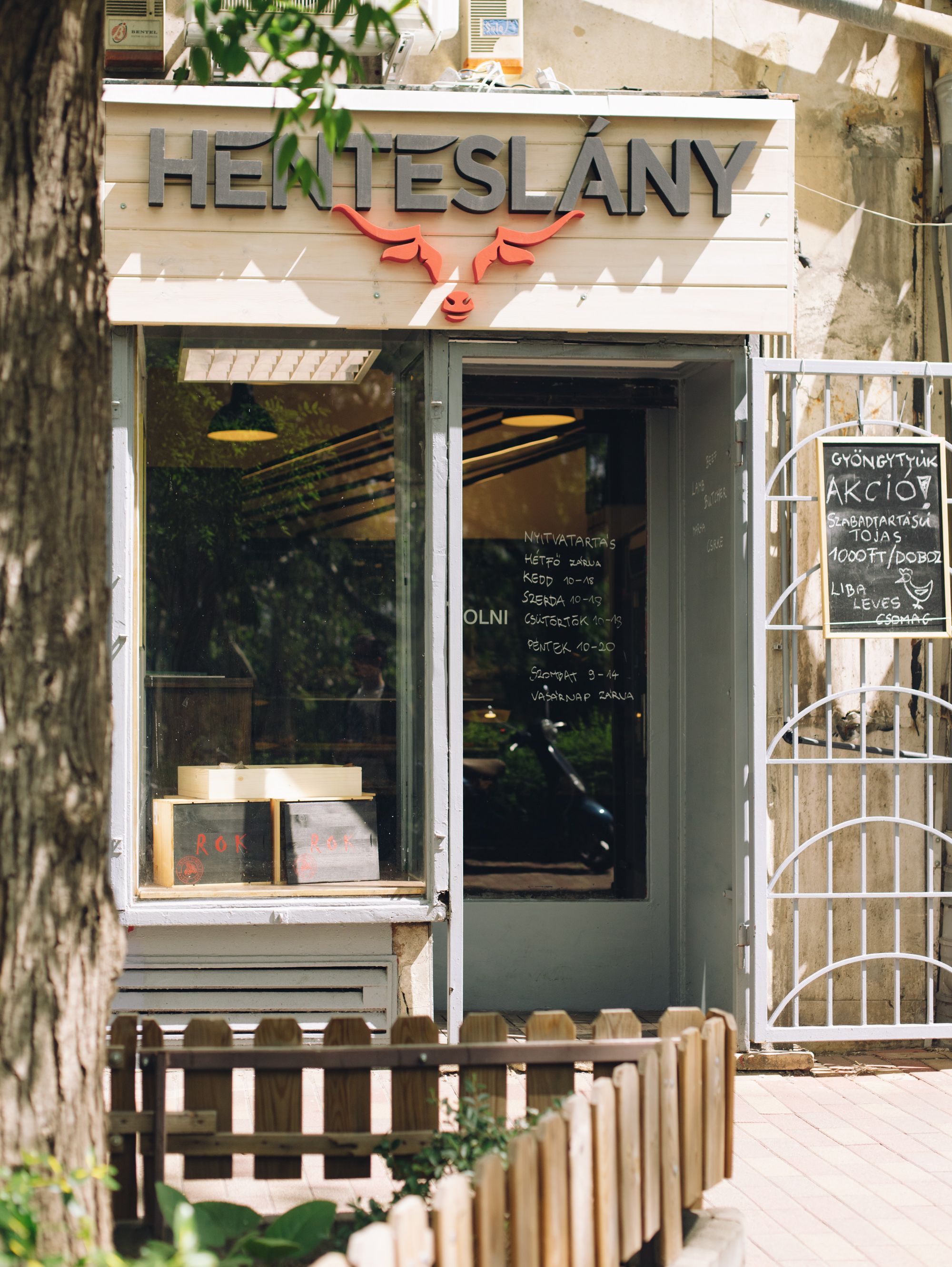
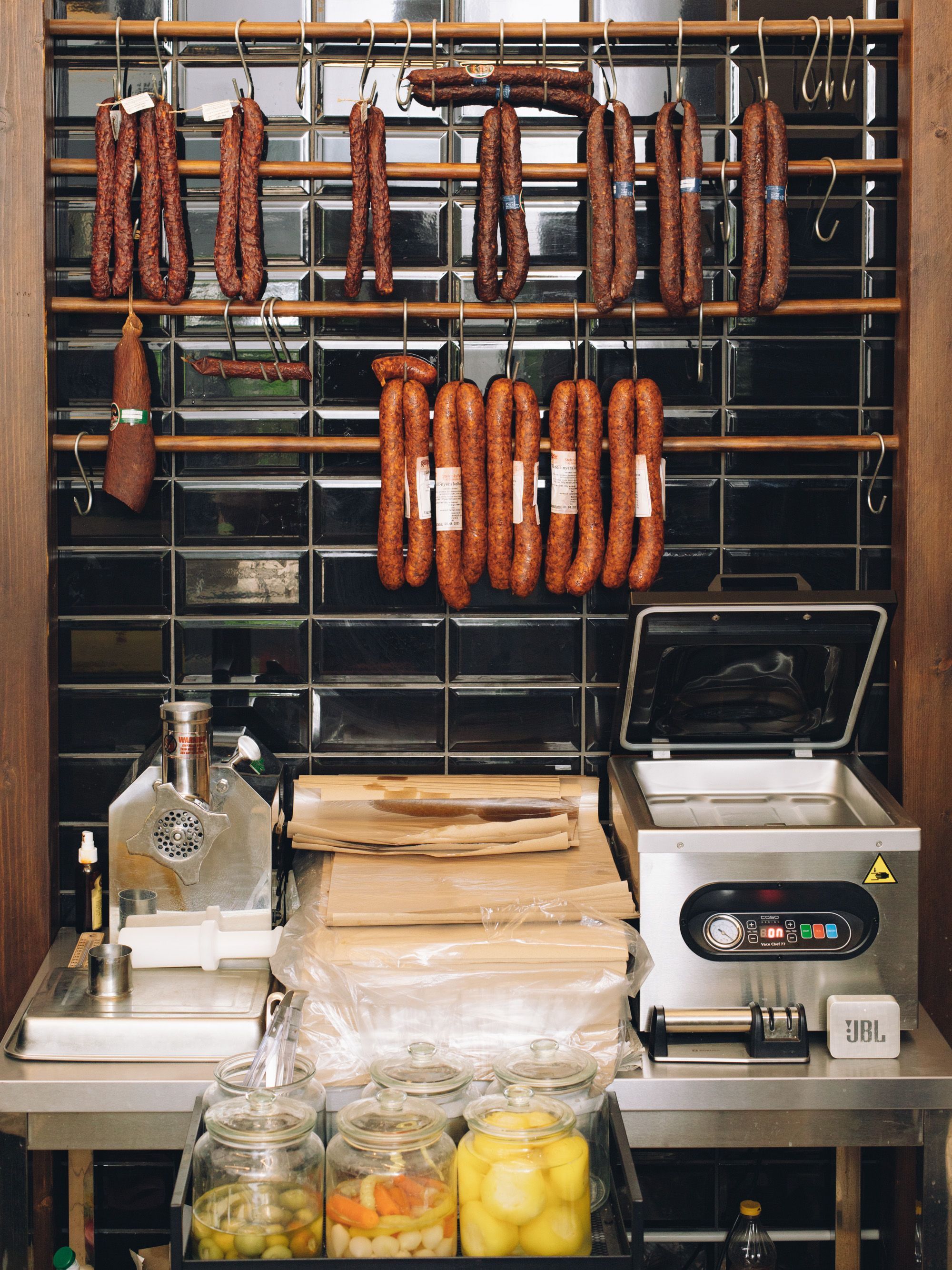
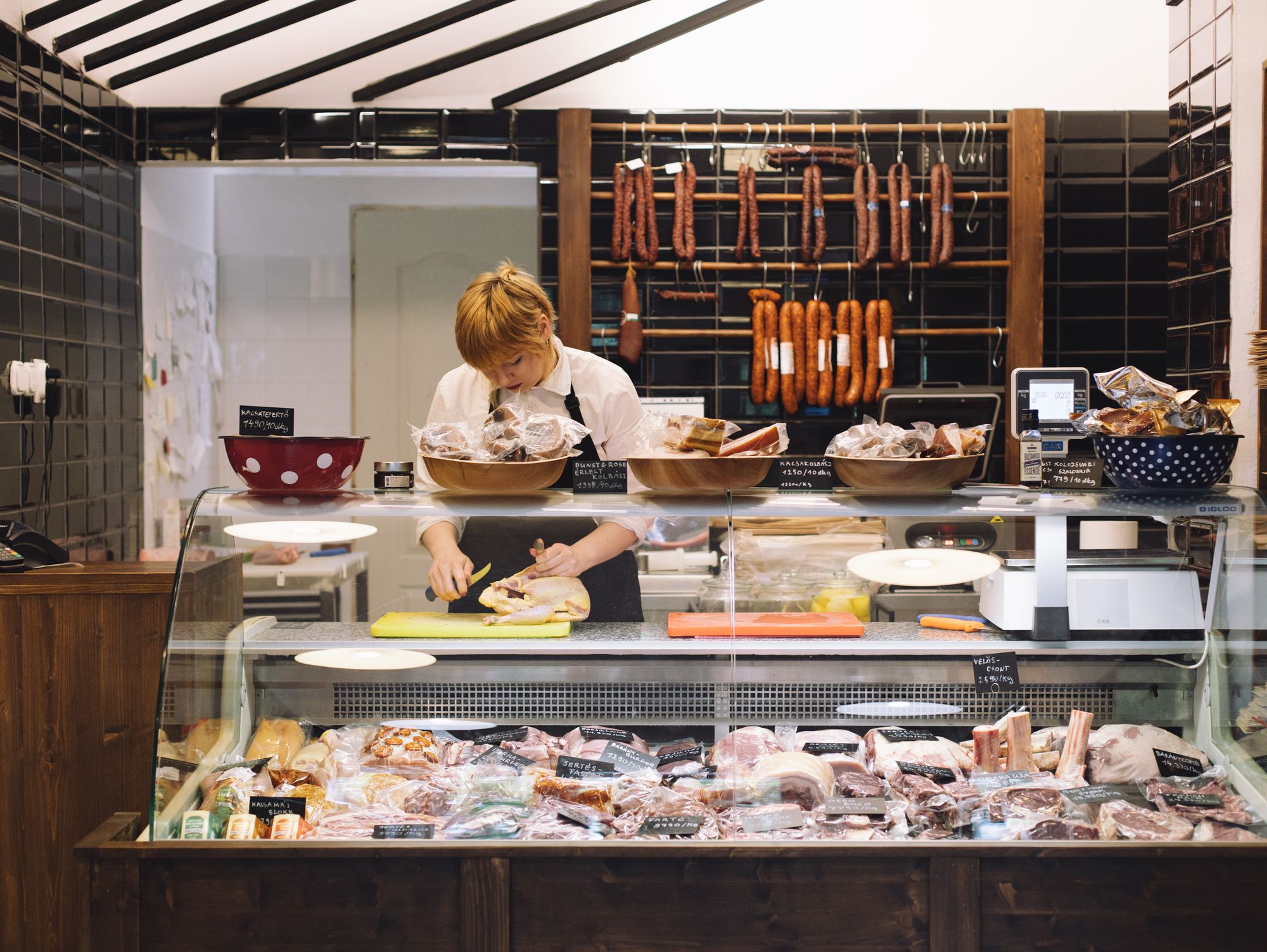

“There were a number of principles that I decided not to compromise on. For one thing, I wanted to be here, I wanted customers to meet me. Also, sustainability was important, and of course quality. I won’t sell anything that I wouldn’t be happy to consume.”
The range of products on the counter was designed to include crowd favorites as well as more specialty items. Since she can’t cut here due to licensing restrictions, only prepare meat products, she started selling produce from local farmers. However, she has found that while there is a satisfactory supply of Hungarian beef and Mangalica pork, there is a lack of quality chicken, so she orders it from a French farm. Rabbit, veal, lamb, venison, and even duck are also available, even in ready-to-cook forms (burgers, pâté, tartar). There are a lot of offal products, and others that are considered retro, but made with excellent ingredients, such as Mangalica Vienna sausage or Bologna sausage. There’s no room for additives—just salt, spices, meat, and maybe a little smoke, that’s all they contain. Later, she also started a delicatessen section with Hungarian wines, mustards, and sauces, with the aim of offering everything one might need to prepare a meat dish. The reception was once again very positive, but the most important thing, according to the regular customers and Oxána, was her personal presence.




“My self-esteem doesn’t depend on how someone addresses me, and I don’t talk in a way to make the customers tremble in fear. I want to help, without any professional hubris. My approach is that there are no wrong questions.”
This personal connection is highly valued by her customers: she has many regulars, both Hungarians and foreigners who have found the courage to cook thanks to her. If someone wants a special order (like a whole, boned goose), she’ll make it. She tries to address everyone with the attention and sensitivity she developed as a photographer, and if she doesn’t know something, she would look it up. For example, since different nations slaughter differently, sometimes a French guest will ask for a cut of meat that is not customary in Hungary, but if she can, she’ll arrange that too.




Of course, Oxána is aware of veganism and plant-based eating and is happy to talk about it. She believes that meat consumption is appropriate in moderation, citing, for example, a Scandinavian textbook’s calculation that half a kilo per person per week would be sustainable. The key is to eat meat less often, but preferably from good sources and of higher quality. Oxána, the Butcher Girl and her plentiful counter are there to help us in this quest. She rushes no one, patiently explaining all there is to know about meat—one of the many reasons why her store has become such a fixture in bustling Újlipótváros that it draws people in even from the other side of town.
Henteslány | Facebook | Instagram
Photos: Dániel Gaál
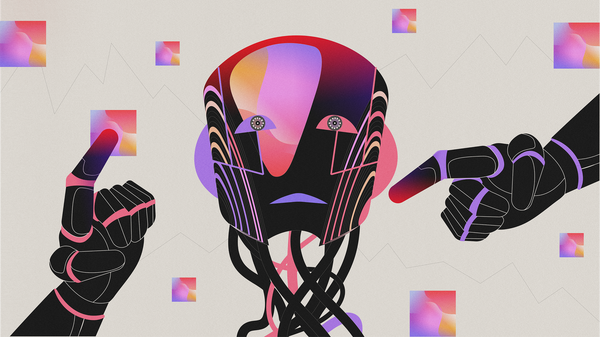
Artificial intelligence: risk or opportunity?

Saul Steinberg’s cat cozies up on the Eames armchair
